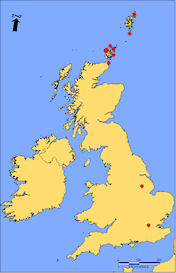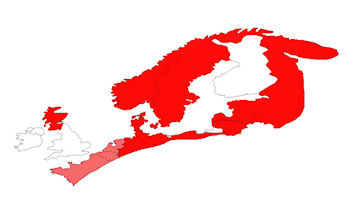
|  |
 |
 [Legend] |
 |

|  |
 |
 [Legend] |
 |
Type 9 comprises single-sided combs that tend to lack incised geometric decoration, and are instead marked by the ornamental application of copper-alloy rivets and sheeting. Such combs seem to appear in the later 10th century, and by the 11th are well known and widespread across Scandinavia, with collections from Trondheim (Flodin 1989), Oslo (Wiberg 1987), Bergen (Grieg 1933, 223-33), Kungahälla (Rytter 1991), Sigtuna (Ros 1990), Lund (Mårtensson and Wahlöö 1970; Persson 1976), Ribe (Andersen 1968; Feveile 1992; Feveile and Jensen 2000), and Schleswig (Ulbricht 1984). They are also numerous in northern Scotland (Curle 1982; Batey 1987; Buteux 1997), Iceland (Amorosi 1992: 121, figs 7-9; K. Milek pers. comm.), Estonia (Luik 1998) and western Russia (Smirnova 2005, fig. 3.36). There is considerable diversity within the group (see Wiberg 1977, and note that the figure above illustrates just one of the more frequently recorded morphological forms), but it is not the aim of this review to investigate internal chronology. Nonetheless, Type 9 as a whole may be dated between the late 10th and 13th centuries.
The comments facility has now been turned off.
© Internet Archaeology/Author(s)
University of York legal statements | Terms and Conditions
| File last updated: Tue Sep 20 2011